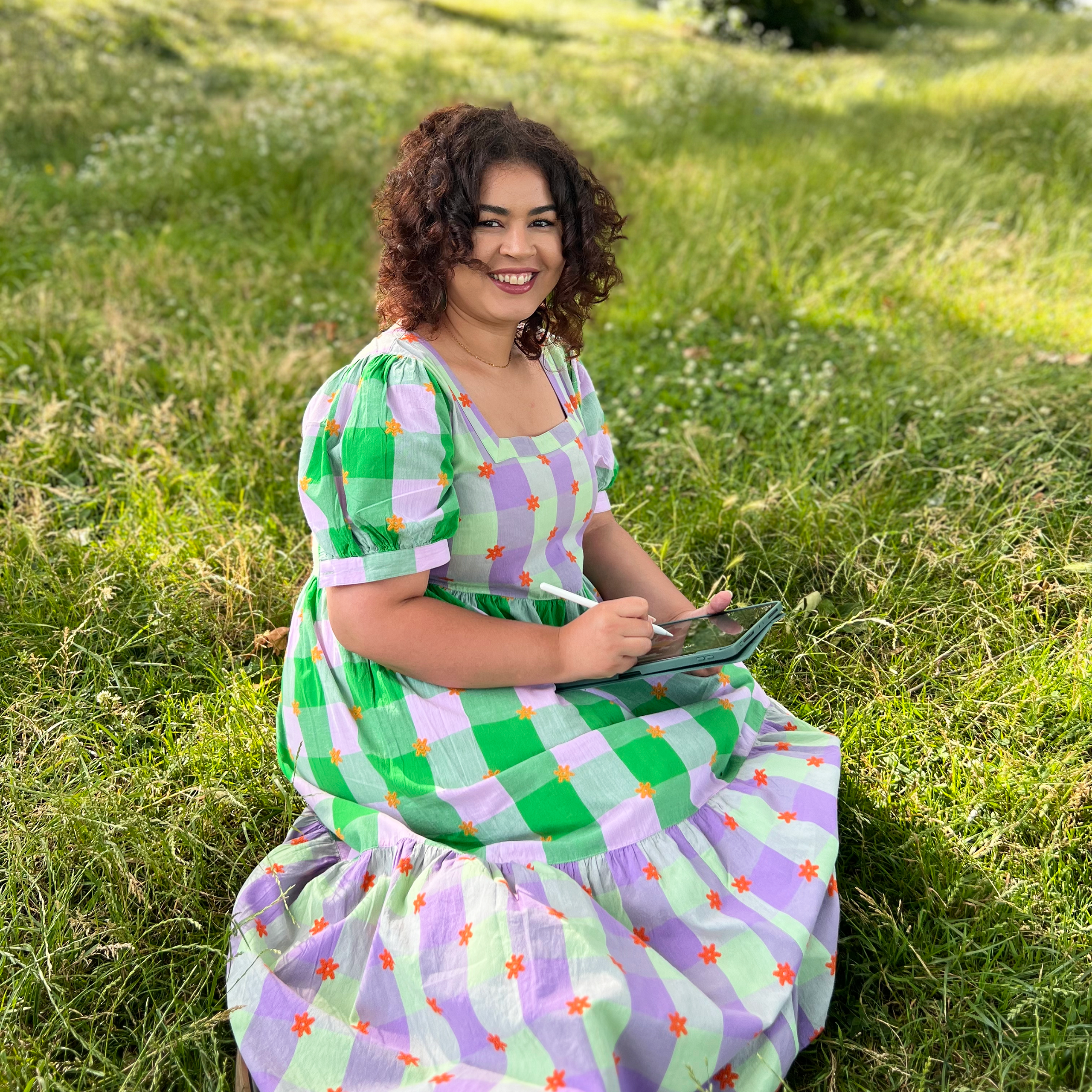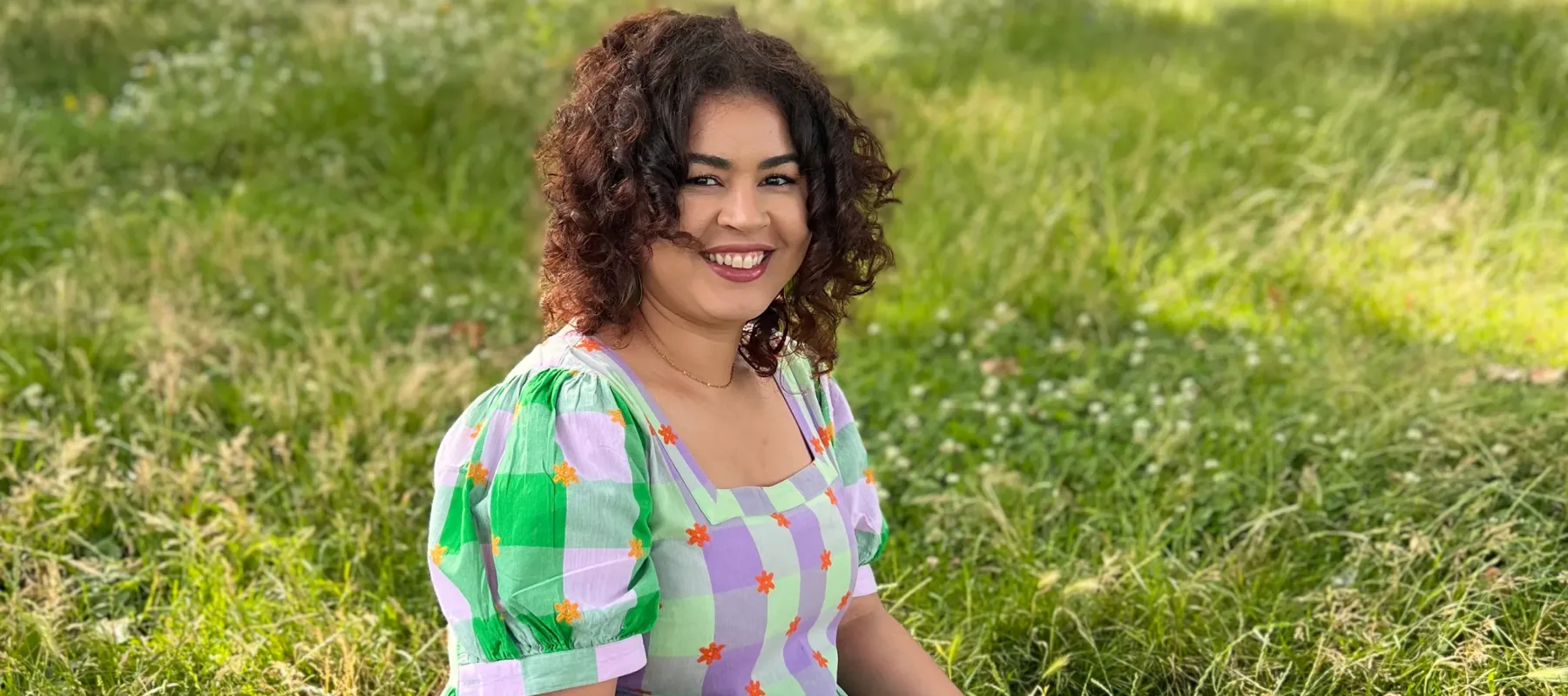We spoke with Sakina Saidi, a French-Moroccan illustrator based in London. Saidi’s work addresses themes of gender equality, mental health, and community. She views illustration as a way to bring people together through shared values.
Check out Sakina’s work in the Museum Shop!

1. What was it like to move from a career in graphic design to pursuing your own vision as an illustrator?
It was liberating! After graduating, I needed the structure provided by a graphic design career. It turned out to be a valuable experience in numerous ways. Throughout my career, I had the opportunity to work in various settings, including in-house, at agencies, and as a freelancer. This allowed me to gain a comprehensive understanding [of the field] and a diverse range of experiences. However, I reached a point where I felt it was time for me to embark on my own journey and pursue my own endeavors.
2. Your illustrations began as a personal outlet. What prompted the shift to your broader work with social justice organizations such as Afghanaid?
I began my journey out of frustration with my day-to-day job in graphic design and a desire to have a creative outlet of my own. Initially, it was all about expressing my emotions and feelings. Surprisingly, my work resonated with people, and I started drawing the things I deeply care about. One of the prominent themes in my art is human rights, especially women’s rights. Certain values hold immense significance to me, and now, more than ever, I feel compelled to share this message and amplify the voices of those who are facing hardships. I worked with various charities and organizations over the last few years and I’m very proud to be able to use my art in this way.
3. What was it like illustrating a book for the first time?
It was very nice to invest myself in a more long-term project. I loved immersing myself in a story and bringing a whole world to life. It was more demanding than other types of projects but very rewarding.

4. Many of your illustrations place importance on self-care. How do you emphasize this practice in your own life?
My illustrations serve as a constant reminder to myself. The quotes and advice I share are reflections of what I need to be reminded of, and it’s amazing to see that these reminders resonate with others too. I see myself as a work in progress, and through sharing my journey, I hope to inspire and connect with others on their own paths of growth and self-discovery.
5. The women in your illustrations are fashionable and vibrant. What is the inspiration for their fashion sense?
I draw inspiration from the people around me, creating a unique blend of memories and encounters with individuals I’ve crossed paths with. Living in London, a vibrant city, provides me with a wealth of diverse experiences that fuel my creativity. Before my time in London, I lived in Lyon, France, and grew up in a multicultural environment. My parents are from Morocco, adding another layer of cultural influence to my work.
6. What five women artists would you choose to draw your portrait?
Frida Kahlo, Baya, Hayv Kahraman, Rocio Navarro, and Lalla Essaydi.
7. What advice would you give someone who wants to work for themselves and pursue their own vision?
Start even if you think you are not ready. Know what you stand for, and trust your intuition.
